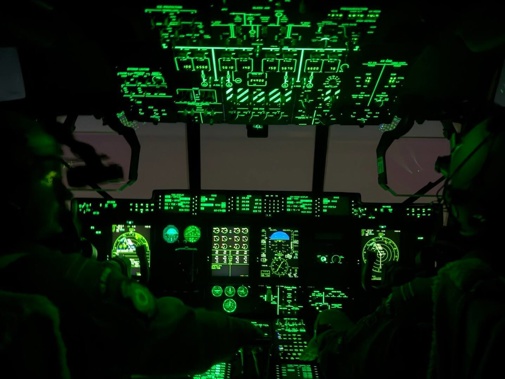
Three people in urgent need of medical attention have been rescued from Antarctica in a daring mid-winter mission by a Royal New Zealand Air Force C-130J Hercules crew.
The challenging medical evacuation was launched after the United States’ National Science Foundation requested help for a person in urgent need of care, along with two others requiring medical attention.
Air Component Commander Air Commodore Andy Scott said the extreme cold, changeable weather conditions, plus landing on the ice in the dark make mid-winter flights to Antarctica one of the most challenging RNZAF air crews perform.

The evacuation was one of the most challenging RNZAF air crews have performed.
“The crew can only attempt the flight after detailed analysis of the weather and airfield state. The US Antarctic Program Winter Team must physically create the runway before we can depart by ensuring the ice is groomed and suitable for landing,” he said.

Three people in urgent need of medical attention were rescued by a Royal New Zealand Air Force C-130J Hercules crew. Photo / Supplied
“Although they determine it is safe, it’s still an extremely challenging environment to fly in on night vision goggles due to the extreme weather conditions, which are highly changeable at this time of year and makes accurate forecasting a challenge.
“This, coupled with there being no airfields available to divert to once the aircraft is past a certain point south adds to the risk, so these missions are not taken lightly.
The patients are now getting the medical treatment they need in Christchurch, he said.

The medical evacuation was launched after the United States’ National Science Foundation requested urgent help. Photo / Supplied
The aircraft flew to Antarctica with NZ Defence Force medical personnel, including a medical officer on board.
The aircraft had been pre-positioned from Auckland to Christchurch on Sunday afternoon, with the crew waiting for a window in the weather to complete the flight.
The crew made the decision to fly on Tuesday afternoon and worked through the night.

Antarctica is in 24-hour darkness at this time of year. Photo / Supplied
Once on the ice, the aircraft’s engines were kept running to keep them warm while it was refuelled, known as “hot refuelling”, before the aircraft returned to Christchurch.
The evacuation took about 19.5 hours, including the short time on the ice.
The US Embassy has since expressed its deep appreciation to the Royal NZ Air Force.

The patients are now receiving medical treatment in Christchurch. Photo / Supplied
“This mission wasn’t just difficult; it was one of the most technically demanding operations an aircrew can face. In extreme conditions, with little margin for error, the RNZAF executed this mid-winter Antarctic medevac flawlessly,” said Chargé d’Affaires, Melissa Sweeney.
The Embassy said this RNZAF mission brought hope in the middle of the Antarctic night.
“We are so very grateful. Our Kiwi partners didn’t hesitate to undertake this mission in one of the most unforgiving environments on Earth. Their skill and readiness are truly world-class,” she said.
RNZAF successfully undertook similar rescues in 2021 and 2024.
“Only the best crews can pull off something like this and the RNZAF proved, again, that they’re among the very best. This isn’t luck, its professionalism, planning, and a level of capability that few can match,” said Chargé d’Affaires, Sweeney.
She noted that the aircrew had to contend with a challenging combination of extreme conditions to land a large aircraft in freezing temperatures, on ice and in darkness wearing night vision goggles.
“This required absolute precision. It was daring, dangerous, and deeply courageous. This is the kind of mission that tests every ounce of skill and bravery. RNZAF delivered, just as they always do.”
Take your Radio, Podcasts and Music with you









